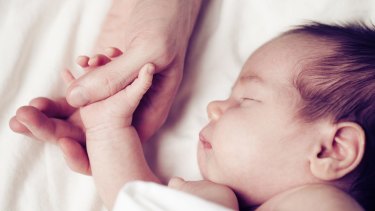In October last year, the Morrison government announced that it would spend $8.5 million to continue the Australian Longitudinal Study on Women’s Health (ALSWH), to help assess “the impacts of COVID-19 on Australian women.” While data of this kind is vital, it only confirms what most women already know all too well: they don’t get enough sleep, and they don’t exercise because they’re too busy and too exhausted.

Women don’t get enough sleep, and they don’t exercise because they’re too busy and too exhausted.Credit:Shutterstock
The lockdowns have underscored a gendered health crisis that has been building for many years. Almost three million middle-aged Australian women don’t get enough exercise, according to the ALSWH. This increases their risk of obesity, diabetes, cardiovascular disease, various cancers, dementia and reduced mobility as they age.
So would women enjoy better health if they worked less? In part, yes, at least in the months immediately after the birth of a child. In its first 10 years, our paid parental leave scheme has improved the wellbeing of Australian mothers, by supporting them to stay at home for longer after giving birth. To build on these gains, we should extend the primary carer payment to 26 weeks. This would better reflect the immense impact that pregnancy, childbirth and breastfeeding can have on women’s bodies.
But in the longer term, work outside the home has innumerable benefits for women. Most women want to work, and most families need two incomes to make ends meet, especially in our largest cities. If the government truly wants to improve women’s health, it needs to do much more than gather data; it needs to offer real solutions to the problem of the ‘second shift’.
A good start would be to offer more leave to new fathers. In theory, the primary carer payment is gender-neutral. In reality, 99.5 per cent of those who receive it are women. The primary carer payment lasts for up to 18 weeks. By contrast, the ‘Dad and Partner’ payment lasts for a mere two weeks.

The primary carer payment lasts for up to 18 weeks. By contrast, the ‘Dad and Partner’ payment lasts for a mere two weeks.Credit:Tribune
This lopsided scheme reinforces a deeply ingrained assumption that women are responsible for children and the home, even if they also work outside it. This assumption has lasting consequences, making it very difficult for mothers to work full-time, even as their children grow older. As we’ve seen in 2020, it also comes at a significant cost to women’s health.
Loading
For solutions, we can look to Scandinavia, where fathers typically have much larger paid leave entitlements. In countries like Sweden, fathers can access to up to three months’ dedicated leave. Even cabinet ministers take several months’ ‘daddy leave’ after their children are born. With leadership from government, these countries have recognised that both men and women have important roles to play in raising children. In 2019, researchers at Stanford University found that the Swedish scheme had led to measurable gains in mothers’ postpartum physical and mental health.
In August 2020, the Grattan Institute proposed a very modest reform: a shift to a gender-neutral scheme that would offer six weeks’ leave to each parent, with a further 12 weeks to be shared between them. This proposal is the logical first step towards a scheme that genuinely treats men and women as equal. Such a scheme would alleviate the crushing burden of the ‘second shift’ and lead to long-term improvements in women’s health. Implementing it should be a high priority for our federal government.
Lucie O’Brien is a Melbourne writer. She has two children, aged three and six.






